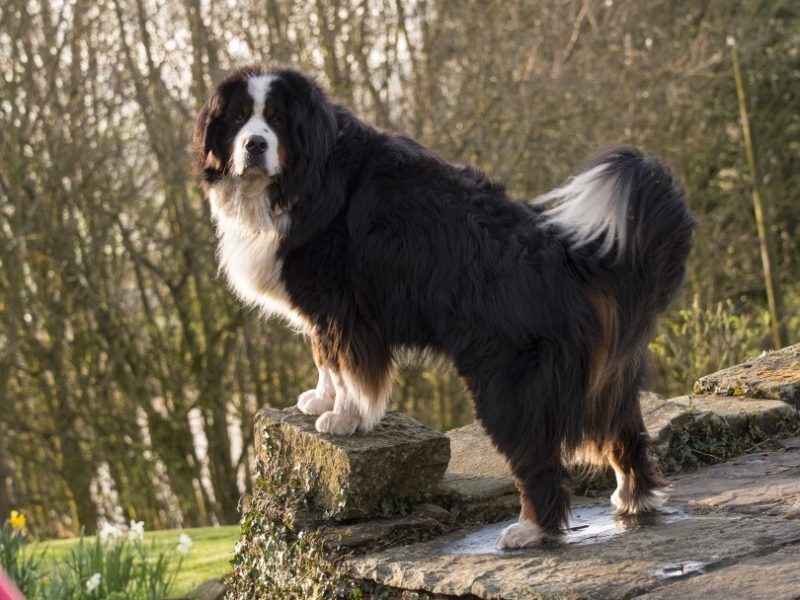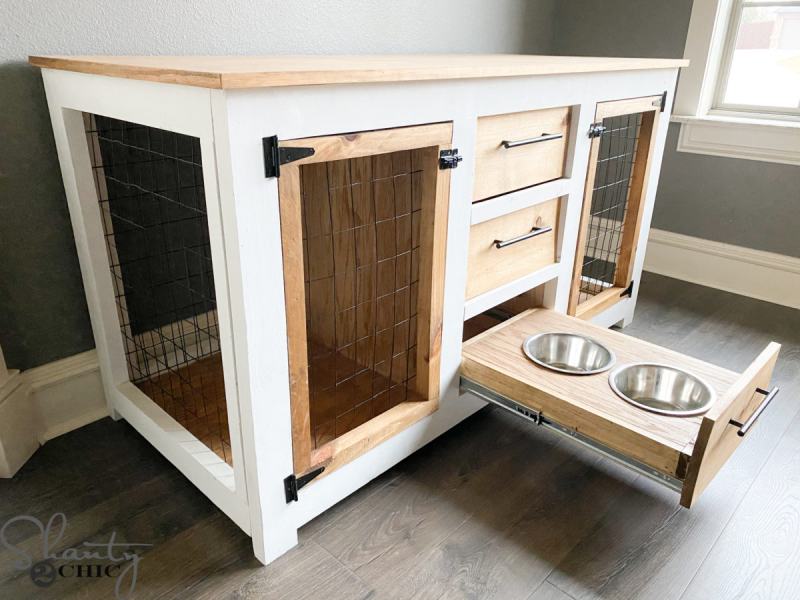Yellow Australian Shepherd: Facts, Origin & History (With Pictures)
Updated on

Click to Skip Ahead
Australian Shepherds are known for their wiggly behinds and tri-colored coats. These dogs are friendly, hard-working, and eager to make new friends. In this post, we’d like to give the Yellow Australian Shepherd the spotlight.
Yellow Australian Shepherds have a dilute yellow color or a dark, sandy gold coat, depending on the dog. The coats typically have white patches accompanying the yellow patches. Aside from its color, the Yellow Australian Shepherd isn’t too different from any other Australian Shepherd. The only difference is that the Yellow Aussie isn’t accepted by the American Kennel Club like the other breeds.
Let’s dive deeper into the Australian Shepherd’s history and see how the Yellow Aussie came to be.
The Earliest Records of Yellow Australian Shepherd in History
Despite the name, Australian Shepherds are an American breed from western states like California, Idaho, Colorado, and Wyoming. But how did the Australian Shepherd come to be? Truthfully, no one really knows, but some theories give us an idea.
In the 1500s, the Spanish Conquistadors brought sheep and generic herding dogs to the New World. The breed eventually populated New Mexico, California, and other western states.
Later in the 1800s, during the Western expansion, Gold Rush, and Civil War, the US saw an increased demand for mutton. Farmers moved their sheep flocks west with their English Shepherd dogs. These shepherd dogs were of Collie descent and had tri-colored fur. At the same time, Australia started shipping Merino sheep to the US along with some herding dogs.
It was these herding dogs that Americans started calling Australian Shepherds. But which ones were responsible for the modern Aussie we love today? That remains a mystery. However, genetic testing has shown that Aussies are closely related to British shepherd breeds.

How the Yellow Australian Shepherd Gained Popularity
Herding dogs were clearly in high demand for a long time in the US, but no one had perfected the Australian Shepherd breed. All the available Aussies were mostly mixes of other shepherd dogs.
Eventually, the Australian Shepherd breed was perfected around the 1950s and 1960s, shortly after WWII. People bred Aussies more for their temperament than their physical attributes. They became the ideal dogs for farms because of their excellent herding abilities.
Later, people experimented more with the breed, creating new colors and patterns. Still, we don’t know precisely when the Yellow Aussie made its debut.
Formal Recognition of the Yellow Australian Shepherd
Although herding dogs have been around for a while, the Australian Shepherd is a relatively new breed. The United States Australian Shepherd Association was established in 1990. Shortly after, The American Kennel Club (AKC) acknowledged the breed in 1991 and accepted the breed into the herding group in 1993.
Unfortunately, the AKC doesn’t recognize Yellow Aussies. It’s believed that the genetic makeup of a Yellow Aussie masks the presence of merle, a genetic pattern in a dog’s coat. This means a Yellow Aussie can carry the Merle gene without it showing in the dog’s coat.
The merle gene can cause severe health defects, so a breeder could breed two Yellow Aussies together and create a litter with severe health problems. However, this is debated among Yellow Aussie breeders.
https://www.instagram.com/p/CEUHVtpJOaS/?utm_source=ig_web_copy_link
Top 3 Unique Facts About the Australian Shepherd
1. The docked Aussie tail is practical, not cosmetic.
The famous Aussie nub isn’t a result of vain, cosmetic dog procedures. Farmers docked the Aussie tail because the dogs were safer when herding the sheep. Now, Aussies have a one-in-five chance of being born with a naturally short tail.
2. Australian Shepherds are famous rodeo performers.
Aussies proved their worth on ranches and farms long before the breed was established. What helped make them famous in the 1950s was their participation in rodeos. Aussies helped herd bulls and even performed rodeo tricks. The crowd loved them!
3. An Australian Shepherd became a frisbee champion.
In the 1970s, an Australian Shepherd named Hyper Hank and his owner, Eldon McIntire participated in a canine frisbee competition and won. They became so famous that they performed at the Super Bowl and the White House.
Does the Yellow Australian Shepherd Make a Good Pet?
Yellow Australian Shepherds are rare since there are health concerns with the breeding process. However, some breeders don’t support these claims and happily breed Yellow Aussies. If you’re set on adopting a Yellow Aussie, you’ll have to drive a long distance and probably join a long waiting list.
In general, Australian Shepherds make excellent pets if you give them a job and don’t mind excess shedding. Aussies aren’t known to be highly affectionate either, but they enjoy cuddles with their owners and love playtime with children.
So, as long as these dogs have an outlet for fun and exercise, you won’t be sorry you adopted an Aussie.
Conclusion
Now you know a little more about Aussies than you did when you first started reading. Australian Shepherds have an interesting history, although there isn’t much information on how they came to be. One thing is sure: these dogs are lifelong herders. Give an Aussie a farm job, and they will exceed your expectations.
Yellow Australian Shepherds are rare, so finding one is tricky. But talk to reputable breeders, and we’re sure you’ll find the dog of your dreams.
See also:
- Black Australian Shepherd: Facts, Pictures, Origin & History
- White Australian Shepherd: Facts, Origin & History
Featured Image Credit: Ermolaeva Olga 84, Shutterstock













